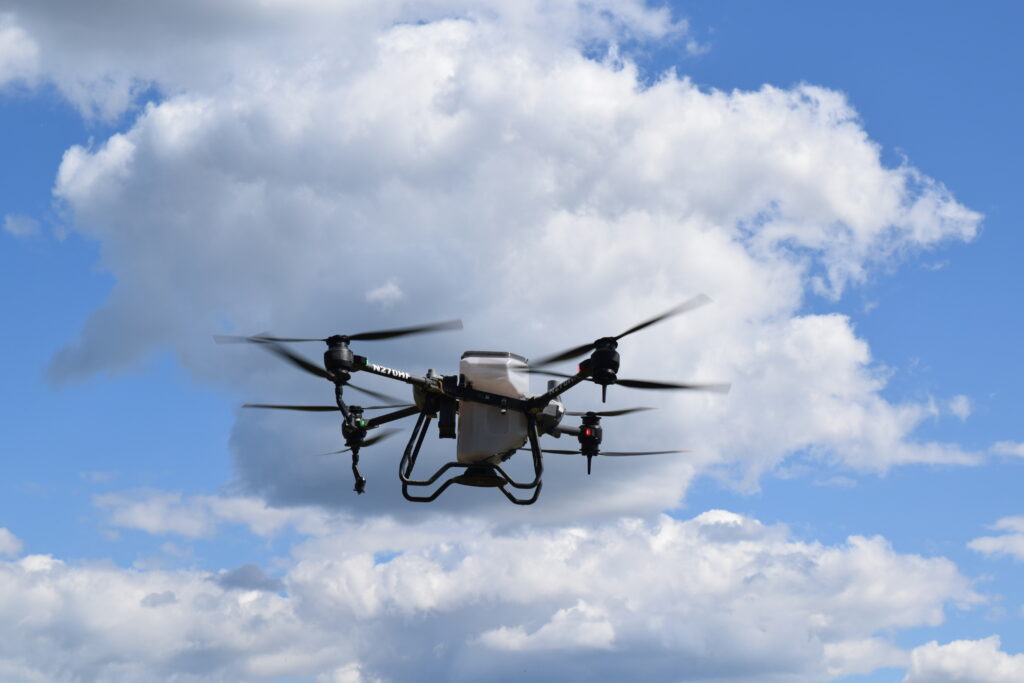What growers and applicators need to know about insurance and compliance
By Eric Greening, AFIS, Family Insurance Center, and Jeramy Williams, American Drone

You’re cruising down a quiet country road when something in the sky catches your eye. A bird? A plane? Not quite. More than likely, it’s one of agriculture’s most exciting technological breakthroughs—a high-powered application drone.
But here’s the big question: How do you insure one of these aircraft?
The answer isn’t as straightforward as you might think. Many custom spray businesses and farmers assume their existing policies cover drones. A common remark we hear is, “My agent just added it to my farm policy.” Unfortunately, that’s usually not enough.
Here’s why: Most farm and commercial insurance policies explicitly exclude coverage for drones weighing over 55 pounds, which includes all major application drones.
Common exclusions on insurance coverage for drones look like this:
- Pollution Liability Coverage
“This coverage does not apply to bodily injury or property damage arising out of owning, maintaining, using, or entrusting to others any aircraft.” - Unmanned Aircraft Liability Coverage
“…we do not cover bodily injury, property damage, or personal injury arising out of the discharge or release of any substance from any unmanned aircraft.”
So, asking your agent, “Does my policy cover drones?” won’t always result in a complete explanation. To protect your drone and spraying operations properly, you’ll need an aviation-specific policy written by someone who is local, can be “boots on the ground” and understands this unique industry.
COMPLIANCE IS KEY
Insurance is only one part of the equation. To operate legally and keep your coverage valid, you’ll also need to maintain several Federal Aviation Administration (FAA)-required licenses and certifications:
- FAA Remote Pilot Certification (Part 107)
- Heavyweight Exemption and Operating Certificate (Part 137)
- FAA Third-Class Medical Certificate (Form 8710-1)
Not only are these required by the FAA, but your insurer will expect them to be current so that the insurance company can honor a claim.
Fortunately, new tools like Drone Logbook – Agriculture Edition (www.dronelogbook.ag) can make compliance easier than ever. This software tracks your certificates, logs flight hours, and even helps plan and document your operations, keeping you both legal and organized.
Also, working with a local and experienced drone dealer who can guide you through the legal process of integrating an application drone into your operation is critical to your success.
This service offered by American Drone out of Marshfield, Wisconsin, is invaluable. From start to finish, American Drone will walk you through every step to safely and legally operate your drone.


